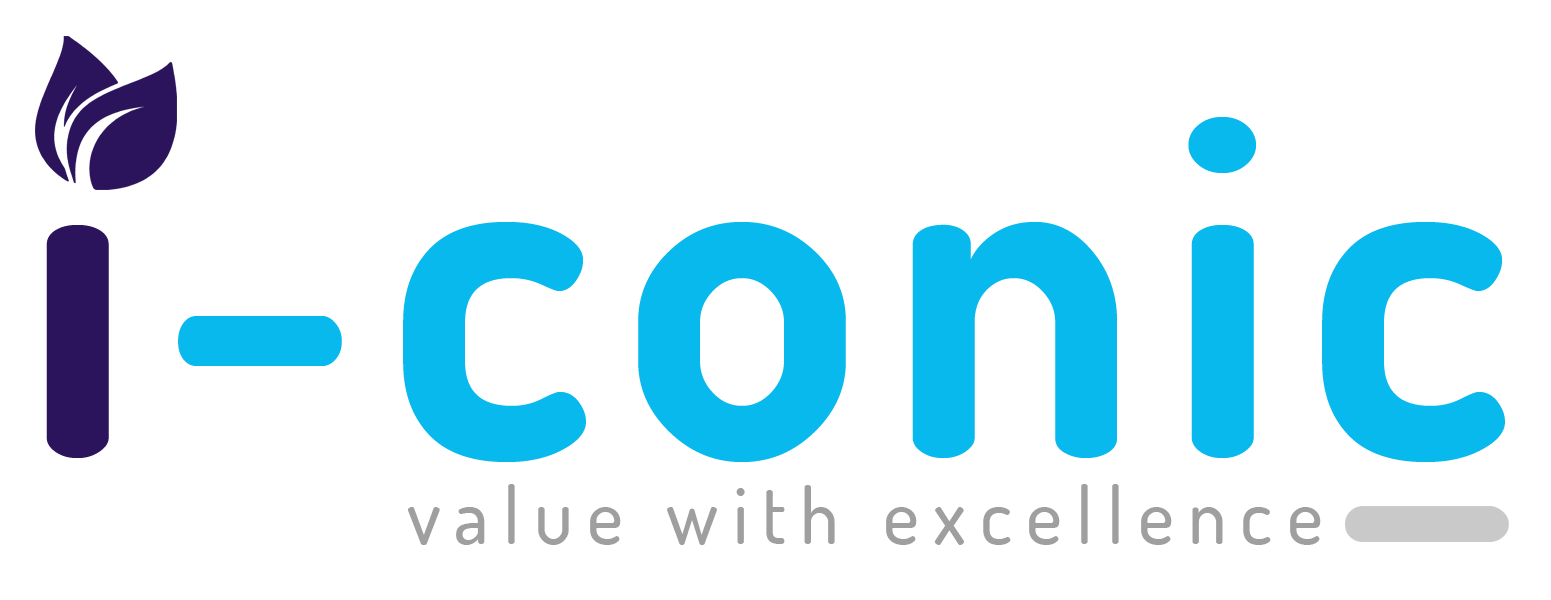Every day, healthcare providers face a crushing reality: 23% of claim denials stem from eligibility and registration issues that could have been prevented with proper verification. This translates to $262 billion in denied claims annually, forcing practices to write off legitimate revenue while patients receive unexpected bills, which erode their trust in your organization.
The administrative burden weighs heavily on healthcare staff. Front-office employees spend 67% of their time on insurance verification tasks, pulling resources away from patient care and creating bottlenecks that extend wait times. Meanwhile, clean claim rates plummet to just 75% when eligibility verification processes fail, compared to 95% for practices with robust verification systems in place.
Healthcare organizations cannot afford to treat eligibility verification as an afterthought. The financial and operational consequences ripple through every aspect of your practice, from cash flow disruptions to patient satisfaction scores. For healthcare leaders seeking operational excellence, mastering eligibility verification represents the foundation of sustainable revenue cycle management.
Professional expertise in eligibility verification can transform your practice’s financial performance while restoring focus to patient care where it belongs.
Understanding Eligibility & Benefits Verification
What is Insurance Eligibility and Benefits Verification?
Insurance eligibility and benefits verification is the systematic process of confirming a patient’s active coverage status, benefit details, and financial responsibilities before providing healthcare services. This critical administrative function protects both providers and patients from unexpected financial burdens while ensuring appropriate service delivery.
Core Components of Verification:
- Coverage Status: Active policy confirmation and effective dates
- Benefit Details: Covered services, exclusions, and limitations
- Financial Responsibility: Deductibles, copayments, and coinsurance amounts
- Network Participation: Provider status and referral requirements
- Authorization Needs: Services requiring prior approval
The verification process serves as your practice’s financial safeguard. When executed properly, it prevents claim denials, reduces bad debt, and creates transparency in patient financial responsibility. However, inadequate verification processes cost the average practice $125,000 annually in preventable claim denials and administrative rework.
The Business Impact of Verification Failures
Healthcare organizations that neglect proper eligibility verification face predictable financial consequences. Denied claims require staff to research, appeal, and resubmit, costing an average of $25 per claim in administrative expenses. Patient collections become significantly more difficult when patients receive surprise bills months after service delivery.
The operational impact extends beyond financial metrics. Verification failures create patient dissatisfaction, staff frustration, and provider concerns about practice viability. These cumulative effects damage your organization’s reputation and competitive position in an increasingly challenging healthcare marketplace.
HIPAA Transaction Standards for Insurance Verification
Which HIPAA Transaction is Used to Check a Patient's Insurance Coverage?
The HIPAA X12 270 transaction serves as the standard electronic inquiry for eligibility and benefit information. This standardized format enables healthcare providers to request comprehensive coverage details directly from insurance companies through secure electronic channels.
HIPAA 270 Transaction Capabilities:
| Information Type | Details Available |
|---|---|
| Coverage Status | Active, inactive, or terminated policies |
| Benefit Details | Covered services, benefit maximums, and exclusions |
| Financial Terms | Deductibles, out-of-pocket maximums, copayments |
| Network Status | In-network vs. out-of-network benefits |
| Authorization | Services requiring prior approval |
The corresponding HIPAA X12 271 transaction delivers the eligibility response from insurance companies. Together, these transactions create a standardized communication protocol that reduces errors and accelerates verification processes.
Electronic Verification Advantages:
- Speed: Real-time responses versus phone hold times
- Accuracy: Standardized data formats reduce transcription errors
- Documentation: Automated record-keeping for compliance
- Efficiency: Batch processing capabilities for multiple patients
- Integration: Seamless connection with practice management systems
Healthcare organizations implementing HIPAA-compliant electronic verification systems report 40% faster verification times and 60% fewer data entry errors compared to manual phone-based processes.
Optimal Sources for Patient Insurance Information
What is the Best Source for the Patient's Insurance Information?
The patient’s current insurance card represents the most reliable primary source for insurance information. However, insurance cards alone provide insufficient detail for comprehensive verification. Modern practices require multiple information sources to ensure accuracy and completeness.
Primary Information Sources (Ranked by Reliability):
- Current Insurance Card: Most recent card with updated policy numbers
- Electronic Health Record: Verified information from previous encounters
- Patient Portal Data: Self-reported information with recent updates
- Phone Verification: Direct patient contact for clarification
- Employer HR Departments: Group coverage verification for accuracy
Critical Information Elements:
| Data Point | Verification Importance |
|---|---|
| Policy/Member ID | Essential for all transactions |
| Group Number | Required for employer-sponsored plans |
| Effective Dates | Prevents coverage gap issues |
| Subscriber Information | Ensures proper claim processing |
| Plan Type | Determines benefit structures |
Common Insurance Card Limitations:
- Outdated effective dates and policy changes
- Missing copayment and deductible information
- Unclear network participation details
- Limited prior authorization requirements
- Absent coordination of benefits information
Smart healthcare organizations supplement insurance card information with electronic verification to ensure comprehensive accuracy. This dual approach reduces claim denials by up to 35% while improving patient financial transparency.
Step-by-Step Patient Insurance Verification Process
How to Verify Patient Insurance?
Effective insurance verification follows a systematic approach that ensures accuracy while maximizing efficiency. The process begins before the patient arrives and continues through service delivery to guarantee complete coverage understanding.
Phase 1: Pre-Appointment Preparation
Step 1: Information Collection
- Obtain insurance cards during scheduling
- Verify patient demographic information
- Document previous insurance history
- Identify potential coverage changes
Step 2: Electronic Verification
- Submit HIPAA 270 eligibility inquiry
- Review 271 response for coverage details
- Document benefit information in patient record
- Flag any discrepancies for follow-up
Phase 2: Day-of-Service Confirmation
Step 3: Card Inspection
- Compare the physical card to the verified information
- Scan or photocopy both sides of the card
- Verify patient identification matches the subscriber
- Check card expiration dates and effective periods
Step 4: Benefit Confirmation
- Confirm copayment amounts and collection requirements
- Verify deductible status and remaining balances
- Review covered services for planned procedures
- Identify any prior authorization requirements
Phase 3: Documentation and Follow-up
Step 5: Record Management
- Update the electronic health record with current information
- Document verification date and method used
- Note any special coverage limitations or requirements
- Schedule follow-up for authorization needs
How to Verify Health Insurance?
Health insurance verification requires understanding the specific nuances of different plan types and coverage structures. Each insurance category presents unique verification challenges that require targeted approaches.
Insurance Type-Specific Approaches:
Commercial Insurance:
- Verify through employer HR departments when possible
- Confirm network participation for all providers
- Review referral requirements for specialty services
- Check the coordination of benefits for dual coverage
Government Programs: When you verify medicare eligibility and benefits for providers, the process requires additional attention to supplement insurance and coordination of benefits. Medicare verification involves checking Part A, Part B, Part C, and Part D coverage separately.
Medicare Verification Requirements:
- Confirm Medicare Part A and B effective dates
- Verify supplement insurance (Medigap) coverage
- Check Medicare Advantage plan participation
- Review Part D prescription drug coverage
Medicaid Programs:
- Verify current eligibility status (can change monthly)
- Confirm managed care organization participation
- Check for Medicare dual eligibility
- Review state-specific coverage limitations
What is the First Step Required to Verify Patient Eligibility?
Patient demographic verification represents the critical foundation of successful eligibility verification. Incorrect demographic information causes 67% of eligibility verification failures, making this initial step essential for accurate coverage confirmation.
Essential Demographic Elements:
| Data Point | Verification Method | Common Errors |
|---|---|---|
| Patient Name | Photo ID comparison | Nicknames vs. legal names |
| Date of Birth | Government ID verification | Transposed numbers |
| Address | Utility bill confirmation | PO Box vs. street address |
| Social Security | Direct patient verification | Spouse vs. patient SSN |
| Phone Number | Callback confirmation | Outdated contact information |
Demographic Verification Protocol:
- Request Current Photo ID: Driver’s license or state-issued identification
- Compare Information: Match ID details to insurance card and registration
- Verify Address: Confirm current residence for correspondence
- Update Records: Correct any discrepancies immediately
- Document Changes: Note verification date and method used
Practices implementing rigorous demographic verification report 45% fewer claim denials related to patient identification errors. This foundational step prevents downstream complications throughout the revenue cycle.
Comprehensive Insurance Verification Methods
How Do You Verify Insurance?
Modern healthcare organizations employ multiple verification methods to ensure comprehensive coverage understanding. The most effective practices combine electronic systems with targeted manual verification for optimal accuracy and efficiency.
Electronic Verification Systems:
Real-Time Eligibility (RTE) Platforms:
- Instant coverage status confirmation
- Comprehensive benefit detail access
- Integration with practice management systems
- Batch processing capabilities for efficiency
Clearinghouse Services:
- Multi-payer connectivity through a single platform
- Standardized response formatting
- Historical verification tracking
- Error handling and retry capabilities
Manual Verification Methods:
Phone-Based Verification:
- Direct insurance company contact for complex cases
- Provider services representative consultation
- Clarification of unusual benefit structures
- Resolution of electronic system discrepancies
Online Payer Portals:
- Insurance company website access for verification
- Provider-specific login credentials required
- Real-time benefit information access
- Print capability for documentation
How to Do Insurance Verification?
Successful insurance verification combines systematic processes with quality control measures. Healthcare organizations must establish standardized workflows while maintaining flexibility for complex cases.
Workflow Optimization Framework:
Daily Operations:
- Schedule verification 24-48 hours before appointments
- Complete electronic inquiries during off-peak hours
- Reserve phone verification for complex cases only
- Document all verification attempts and results
Quality Control Measures:
- Random verification audits for accuracy assessment
- Staff training on insurance product variations
- Error tracking and process improvement initiatives
- Patient communication protocols for coverage issues
Technology Integration:
- Practice management system integration for efficiency
- Electronic health record documentation requirements
- Clearinghouse connectivity for multi-payer access
- Reporting capabilities for performance monitoring
How to Verify Insurance Coverage?
Coverage verification extends beyond simple eligibility confirmation to include comprehensive benefit analysis. Effective coverage verification prevents surprise billing while ensuring appropriate service delivery.
Coverage Analysis Components:
Benefit Structure Review:
- Annual deductible amounts and year-to-date satisfaction
- Out-of-pocket maximum limits and current status
- Copayment requirements for different service types
- Coinsurance percentages for covered procedures
Service-Specific Coverage:
- Preventive care benefits and frequency limitations
- Diagnostic procedure coverage and restrictions
- Specialist referral requirements and authorization needs
- Durable medical equipment benefits and suppliers
Network Participation Verification: When you verify medicare eligibility and benefits for providers, network participation becomes particularly important due to assignment rules and supplemental insurance coordination.
Provider Network Status:
- Primary care physician assignment requirements
- Specialist network participation confirmation
- Facility network status for planned procedures
- Out-of-network benefit availability and limitations
What Methods Can Be Used to Verify Patient Eligibility?
Healthcare organizations can choose from multiple verification methods, each offering distinct advantages depending on practice size, patient volume, and resource availability. The optimal approach often combines multiple methods for comprehensive coverage.
Verification Method Comparison:
| Method | Speed | Accuracy | Cost | Best Use Case |
|---|---|---|---|---|
| Electronic RTE | High | High | Low | High-volume practices |
| Phone Verification | Medium | High | Medium | Complex cases |
| Online Portals | Medium | High | Low | Selective verification |
| Third-Party Services | High | Very High | Medium | Outsourced operations |
| Manual Card Review | Low | Medium | Low | Basic confirmation |
Hybrid Verification Strategy:
Primary Method: Electronic real-time eligibility for 80% of standard cases
Secondary Method: Phone verification for complex benefit structures
Quality Control: Random manual audits of electronic verification results
Backup Process: Online portal access when electronic systems fail
Healthcare organizations implementing comprehensive verification strategies report:
- 92% first-pass claim acceptance rates
- 67% reduction in patient billing inquiries
- 45% decrease in bad debt write-offs
- 23% improvement in patient satisfaction scores
Advanced Verification Strategies for Complex Cases
Handling Special Circumstances
Healthcare practices encounter numerous situations requiring specialized verification approaches. These complex cases demand additional attention to prevent claim denials and patient dissatisfaction.
High-Risk Scenarios:
Recent Plan Changes:
- Employment transitions affecting coverage
- Divorce or marriage impacting dependent status
- Medicare transitions at age 65
- Employer group plan modifications
Coordination of Benefits:
- Primary and secondary insurance determination
- Workers’ compensation claim involvement
- Auto insurance medical coverage
- Government program coordination
Prior Authorization Integration: When you verify medicare eligibility and benefits for providers, prior authorization requirements often intersect with eligibility verification, requiring coordinated workflows to ensure complete service approval.
Technology Solutions for Verification Excellence
Artificial Intelligence Integration:
Modern verification platforms incorporate AI technology to improve accuracy and efficiency:
- Predictive analytics for coverage change identification
- Natural language processing for benefit interpretation
- Machine learning algorithms for denial pattern recognition
- Automated workflow optimization based on historical data
Integration Capabilities:
Practice Management System Connectivity:
- Real-time eligibility checking within scheduling workflows
- Automatic benefit posting to patient accounts
- Alert systems for coverage issues or changes
- Reporting dashboards for verification performance monitoring
Electronic Health Record Integration:
- Historical verification data access for trending analysis
- Clinical decision support based on coverage limitations
- Patient portal integration for self-service verification
- Mobile applications for point-of-care verification
Measuring Verification Success and ROI
Key Performance Indicators
Healthcare organizations must track specific metrics to evaluate verification program effectiveness and identify improvement opportunities.
Financial Performance Metrics:
| Metric | Target Range | Impact |
|---|---|---|
| First-Pass Claims Rate | 95-98% | Revenue acceleration |
| Bad Debt Percentage | <2% | Financial protection |
| Denial Rate | <5% | Administrative efficiency |
| Collections Rate | >90% | Cash flow optimization |
Operational Efficiency Metrics:
- Average verification time per patient
- Staff productivity rates for verification activities
- Electronic vs. manual verification ratios
- Patient wait times related to verification issues
Patient Experience Indicators:
- Financial transparency satisfaction scores
- Surprise billing complaint rates
- Patient portal utilization for verification
- Appointment scheduling efficiency
Return on Investment Analysis
Comprehensive eligibility verification programs generate measurable returns through multiple channels:
Direct Financial Benefits:
- Prevented claim denials: $125,000 annually for average practice
- Reduced administrative costs: 40% decrease in verification labor
- Improved collections: 25% increase in patient payment rates
- Decreased write-offs: 60% reduction in uncollectable accounts
Indirect Operational Benefits:
- Enhanced staff satisfaction through process efficiency
- Improved provider confidence in practice management
- Reduced patient complaints and billing inquiries
- Stronger payer relationships through accurate submissions
I-Conic Solutions: Your Verification Excellence Partner
Healthcare organizations struggling with eligibility verification complexity don’t have to navigate these challenges alone. I-Conic Solutions specializes in transforming verification processes into competitive advantages through expert-managed services and technology solutions.
Comprehensive Verification Services:
When you verify medicare eligibility and benefits for providers through I-Conic Solutions, you gain access to specialized expertise in government program requirements, supplement insurance coordination, and complex benefit structures that challenge even experienced verification staff.
Service Excellence Guarantees:
- 98% first-pass claim acceptance rates
- 24-hour verification turnaround times
- Dedicated account management and support
- Comprehensive reporting and analytics
Technology Platform Advantages:
- Multi-payer connectivity through single integration
- Real-time benefit information access
- Automated workflow management
- Predictive analytics for coverage changes
Healthcare leaders choose I-Conic Solutions because verification excellence requires specialized knowledge, advanced technology, and dedicated focus that internal staff cannot always provide. Our partnership approach allows your clinical staff to focus on patient care while ensuring optimal revenue cycle performance.






